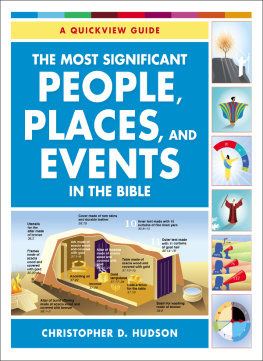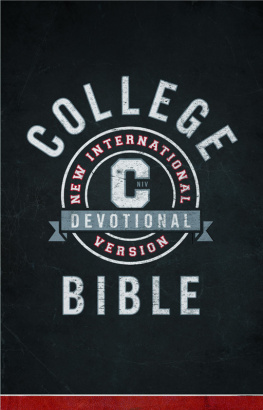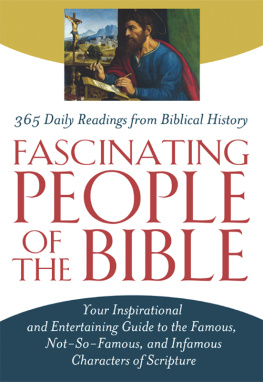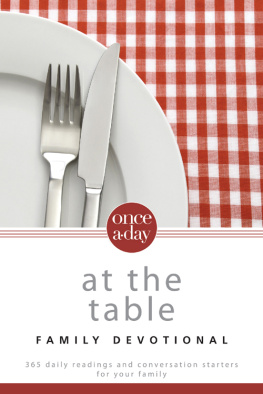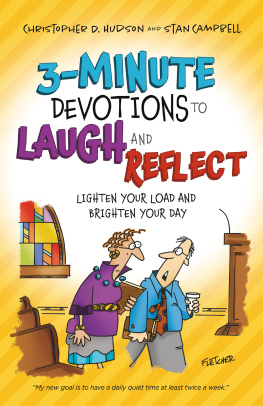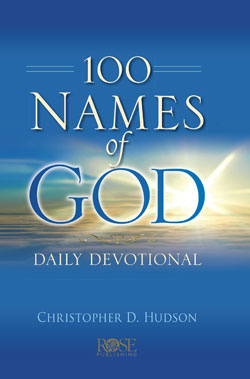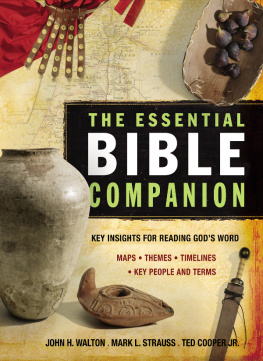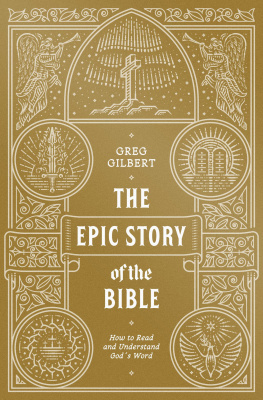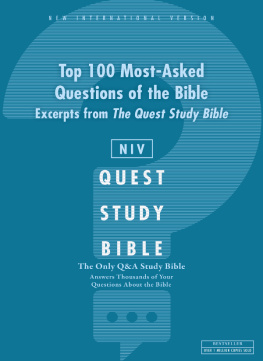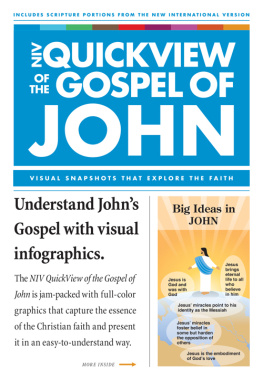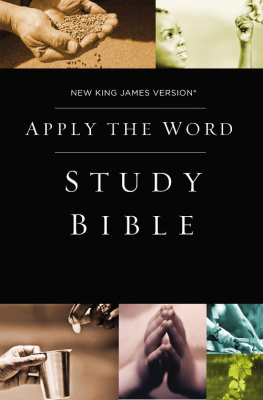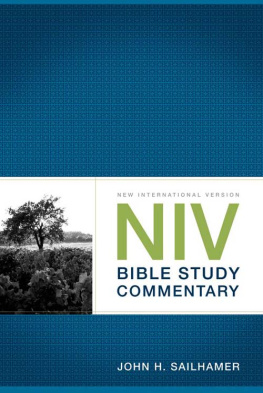
ZONDERVAN
The Most Significant People, Places, and Events in the Bible
Copyright 2015 by Christopher D. Hudson
Requests for information should be addressed to:
Zondervan, 3900 Sparks Dr. SE, Grand Rapids, Michigan 49546
ePub Edition January 2015: ISBN 978-0-310-51836-5
All Scripture quotations, unless otherwise indicated, are taken from The Holy Bible, New International Version, NIV. Copyright 1973, 1978, 1984, 2011 by Biblica, Inc. Used by permission. All rights reserved worldwide.
Unless otherwise noted, all infographics are used by permission Christopher D. Hudson.
Any Internet addresses (websites, blogs, etc.) and telephone numbers in this book are offered as a resource. They are not intended in any way to be or imply an endorsement by Zondervan, nor does Zondervan vouch for the content of these sites and numbers for the life of this book.
All rights reserved. No part of this publication may be reproduced, stored in a retrieval system, or transmitted in any form or by any means electronic, mechanical, photocopy, recording, or any other except for brief quotations in printed reviews, without the prior permission of the publisher.
Cover design: Tammy Johnson
Cover photography or illustration: Christopher Hudson, www.HudsonBible.com
Interior illustration: Teresanne Russell
Interior design: Hudson & Associates, Inc.
14 15 16 17 18 19 20 /CTC/ 22 21 20 19 18 17 16 15 14 13 12 11 10 9 8 7 6 5 4 3 2 1
To Caleb
CONTENTS
I am blessed to be surrounded by wonderful, Bible-loving people who share my passion for teaching Gods Word and who made this book possible.
Special thanks go to Scott Rutherford: your research, concepts, ideas, and drafts were a gift and a blessing. Thank you, Janay Garrick, for helping me work through the writing and drafts. And Im grateful for Nathan Barnes, whose valuable insights and review helped make this title better. Certainly, the greatest of thanks goes to Teresanne Russell, the talented artist who built each image in this book and in the NIV QuickView Bible.
Thank you to Madison Trammel and Nancy Erickson at Zondervan Academic for believing in this book, as well as to the Zondervan Bible team (Chip, Melinda, Mike, Amy, Shari, Doris, and Jean), who supported and published the NIV QuickView Bible.
Last, thanks to my beautiful wife, Amber. You create the ultimate learning visual by displaying the love of Christ to me each day.
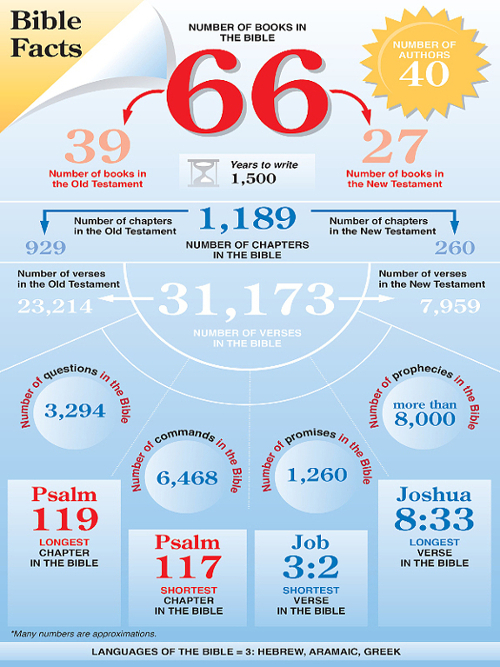
Zondervan. Used by permission
T he Bible is wonderfully complex. As the inspired Word of God, it is unlike any other book we might read, past or present. The Bible is an anthology of 66 books that were penned by at least 40 unique authors. While 39 books compose what Christians refer to as the Old Testament, the other 27 books compose the New Testament. Within both Testaments there is a wealth of complex and beautiful material to engage our hearts, minds, and spirits.
The Most Significant People, Places, and Events in the Bible: A QuickView Guide will help you make sense of the 31,000+ verses in Scripture. The Quickview Guide visually orients you to major characters, places, and events. Its infographics provide quick overviews alongside short articles that summarize key information. The book is divided into four helpful sections:
1. QuickView: Summary of the Bible. Whether you are new to the Bible or a regular reader, the images and articles in this section will give you a new perspective and handy overview of the Bibles 1,189 chapters.
2. QuickGlance: Bible Characters. This section provides fast facts and visual overviews of the real men and women in the Bible. By reading this section youll be able to answer questions such as: Who were Abraham, Isaac, and Jacob? What similarities do Adam and Noah share? What does the Bible say about Jesus and the people who followed him?
3. QuickScan: Bible Places. Any good story is located in a specific place and time. QuickScan explores questions such as: What is the terrain of Israel? How about the climate in Egypt? Why didnt the Israelites get along with the people from Samaria? Getting to know the various settings and lands of the Bible will greatly enhance your understanding of each story.
4. QuickLook: Bible Events and Story Line. We have all heard the saying, A picture speaks a thousand words. Learning experts report that 83 percent of human learning occurs visually, yet the Bible contains over 725,000 words. Thats a lot of words! The QuickLook section provides pictures that talk and teach, hopefully opening up new insights into the biblical story.
I hope you enjoy The Most Significant People, Places, and Events in the Bible: A QuickView Guide and its 100 new images that make Gods message of hope in Scripture both engaging and accessible. Our Savior has come, and this is truly good news. Lets continue to read, engage, apply, and share the Bible.
Christopher D. Hudson
www.ReadEngageApply.com
Twitter: @ReadEngageApply
Facebook.com/Christopher.D.Hudson.books
T he Bible is not written in the chronological style of many modern-day history books, so attempting to read it as such will be frustrating. The books of the Protestant Bible are arranged by subject, but if reassembled in chronological order, they disclose the progressive revelation of God, specifically the creation of humanity, our fall from a state of perfection, and the promise of God to send a Savior. The charts over the next few pages depict the key themes youll find as the chronological story line of the Bible progresses.
Genesis and Job, the earliest story lines, reveal the power of God in his majesty and creation. Although sin enters the world through the first man and womans disobedience and the lies of a serpent (Satan), God chooses a people to call his own and promises that salvation will one day come.
Shortly after Adam and Eves first sin, God says to the serpent: I will put enmity between you and the woman, and between your offspring and hers; he will crush your head, and you will strike his heel (Genesis 3:15). This verse conveys the curse, or the story of humanitys fall from a state of grace.
Genesis 3:15 also contains Gods ultimate promise, that one of Adam and Eves own offspring will crush [the] head of the serpent (Satan). Christians will later interpret this as a messianic prophecy, foretelling the coming of Jesus, the Messiah and Savior, who would reverse the catastrophic effects of the fall.
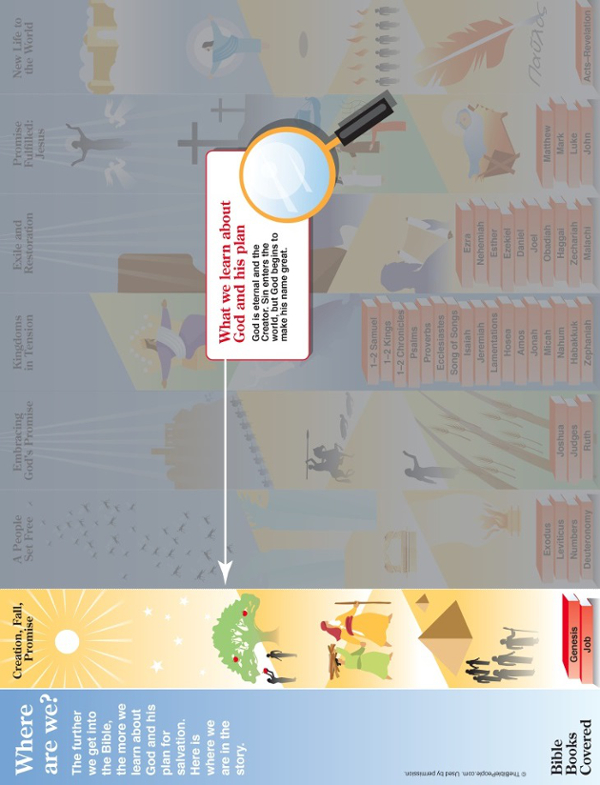
T he book of Genesis ends with Jacob the heir of Gods promises to Adam, Eve, and Abraham and his sons resettling in Egypt. The first chapter of Exodus skips ahead 400 years, where we discover that the Hebrew people are now enslaved by the Egyptians. Exodus, Leviticus, Numbers, and Deuteronomy tell the story of God rescuing his people from slavery and their beginnings as a nation.
As is fitting with the Bibles overarching narrative, God is not only interested in giving his people physical freedom from their oppressors and a land of their own, but he is also interested in a relationship with them. Exodus 6:7 reveals his heart: I will take you as my own people, and I will be your God. The Bible is the story of Gods efforts to repair humanitys broken relationship with him, something that was damaged when Adam and Eve sinned in the garden.
Next page
